Most Expensive NFTs and Collections of All Time
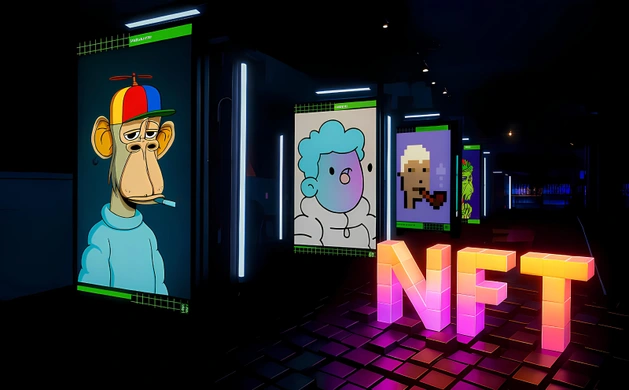
Summary: NFTs have redefined digital ownership, turning unique digital creations into highly valuable assets driven by cultural impact, rarity, and innovation. From a $91.8M fragmented artwork to pixelated avatars selling for millions, NFTs combine art, technology, and economics like never before.
Using historical data from news articles and data analytical platforms, we've compiled the following list of the top 5 most expensive NFT sales of all time:
- The Merge - $91.8 million (2021 by Pak)
- Everydays: The First 5000 Days - $69.3 million (2021 by Beeple)
- Clock - $52.7 million (2022 by Pak & Julian Assange)
- HUMAN ONE - $28.9 million (2021 by Beeple)
- CryptoPunk #5822 - $23.7 million (2022 by Larva Labs)
OpenSea is the leading NFT marketplace offering the most diverse range of premium digital collectibles, trusted by artists, celebrities, and serious NFT investors for secure high-value transactions.
Supported Blockchains
Ethereum, Solana, Bitcoin, Polygon, Monad, and more
Top Sales
$23.7M CryptoPunk #5822, $11.75M CryptoPunk #7523
Trading Volume
$40B+ total sales across 2M+ verified NFT collections
Most Expensive NFT Sales of All Time
Even after the initial hype, NFTs continue to see headline-grabbing sales. Below we detail the most expensive single NFT sales ever recorded (as of July 28, 2025), with prices in USD.
These represent the pinnacle of the NFT market, where digital art and collectibles sold for life-changing sums. For each, we provide context and key facts that you can check in the table below:
1. The Merge
The Merge holds the record for the largest total amount paid for an NFT artwork. Created by the anonymous digital artist Pak, The Merge was not a traditional one-off sale to a single buyer; it was a unique open edition sale on the Nifty Gateway marketplace.
During a 48-hour sale in December 2021, Pak offered “mass” units of The Merge, allowing collectors to buy as many units as they wanted, which later merged into a single NFT in each buyer’s wallet. Nearly 29,000 collectors spent a combined total of $91.8 million to acquire 312,686 units.
This innovative sale mechanism blurred the lines of what counts as one artwork, but if counted in total, it is the priciest NFT event ever. Essentially a collector phenomenon, thousands of buyers participated, dictated by Pak’s reputation and the sale's game-like mechanics.
The Merge NFT Highlights:
- Platform: The Merge was sold on the Nifty Gateway marketplace.
- Creator: Pak is a renowned yet anonymous digital artist known for pushing boundaries in cryptoart.
- Sale Format: Open edition sale lasting two days (Dec 2-4, 2021), with unit prices starting low and increasing over time.
- Other Key Info: Multiple purchased units merged into a single larger NFT in each buyer’s wallet, emphasizing digital scarcity uniquely.
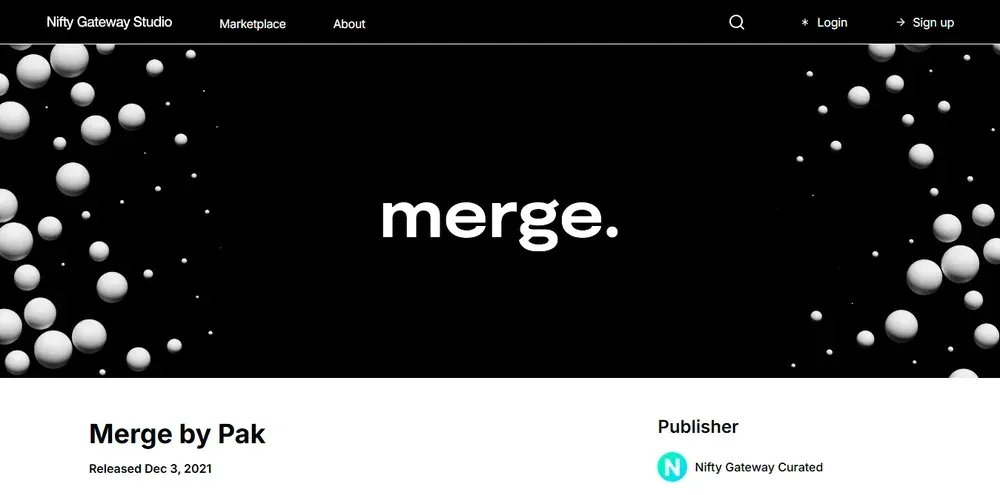
2. Everydays: The First 5000 Days
This NFT going by the name "Everydays: The First 5000 Days" by digital artist Mike Winkelmann, aka Beeple, famously ignited the NFT mainstream moment. Everydays is a collage of 5,000 images created by Beeple, who produced one piece of art daily for over 13 years and combined them into a single composition.
The NFT was auctioned at Christie’s in March 2021 with an opening bid of just $100, but a frenzied bidding war involving traditional art collectors and crypto investors drove the price to $69.3 million. This sale made Beeple’s work one of the most expensive artworks ever by a living artist at the time.
Everydays' sale was a watershed moment that put NFTs on the global map. It highlighted digital art’s viability in the fine art world and kicked off an NFT collecting frenzy in 2021. The artwork itself reflects Beeple’s journey and the evolution of internet culture over the 2010s, which resonated with collectors
Everydays: The First 5000 Days Highlights:
- Platform: Sold at Christie’s, marking the first purely digital NFT artwork auctioned by a major auction house.
- Creator: Beeple (Mike Winkelmann) is a digital artist known for his daily art practice.
- Sale Format: Auction held on March 11, 2021, with the final bid paid in Ethereum (about 42,329 ETH).
- Other Key Info: Purchased by blockchain entrepreneur Vignesh Sundaresan (Metakovan), who later displayed the artwork in virtual museums.
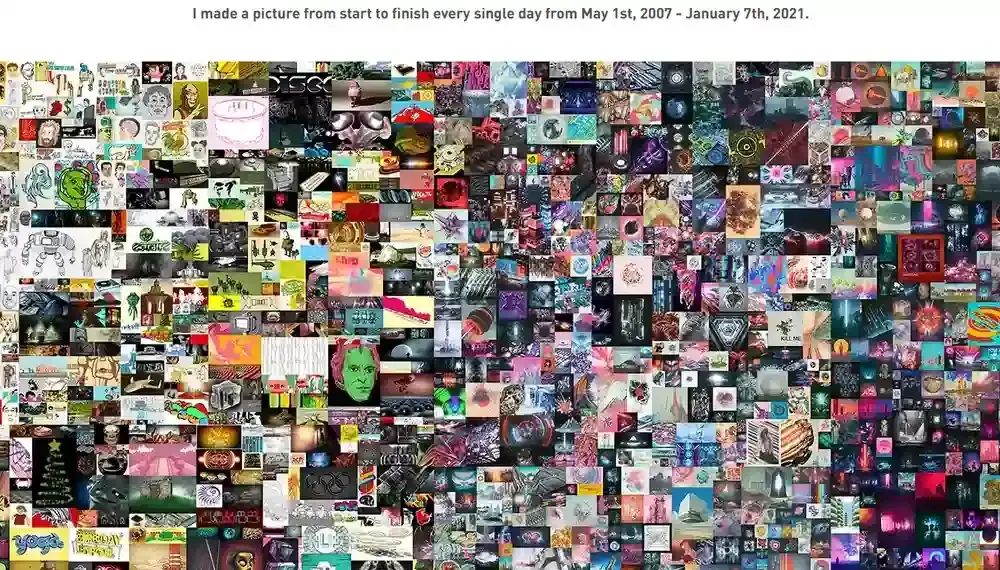
3. Clock
The "Clock" NFT is both art and political statement. Clock was created by Pak in collaboration with WikiLeaks founder Julian Assange. It’s a simple yet powerful piece: a digital clock that counts the days Assange has been imprisoned.
The NFT was auctioned in February 2022 on the censored.art platform to raise funds for Assange’s legal defense. A decentralized collective of over 10,000 supporters, AssangeDAO, pooled funds to place the winning bid of 16,593 ETH (≈$52.7 million).
Interestingly, Clock updates daily, and its value was influenced by its symbolism and purpose. Owning the NFT was less about display and more about sending a message (and contributing to Assange’s cause). This sale is among the clearest examples of NFTs intersecting with politics and charity on a massive scale.
Clock Highlights:
- Platform: Auctioned on censored.art, a digital art platform.
- Creator: Digital artist Pak collaborated with WikiLeaks founder Julian Assange.
- Sale Format: Online auction held on February 9, 2022, with funds collectively raised by AssangeDAO.
- Other Key Info: Funds raised from the NFT sale supported the Wau Holland Foundation for Assange’s legal defense.
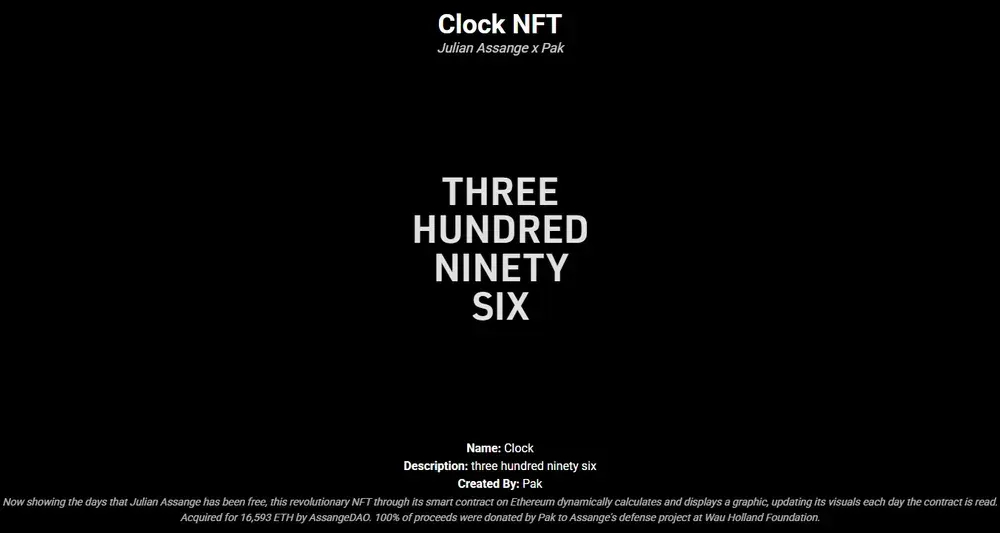
4. HUMAN ONE
Beeple makes another appearance with HUMAN ONE, which sold for $28.95 million in November 2021. HUMAN ONE is a hybrid physical and digital artwork: a 7-foot-tall spinning video sculpture displaying an astronaut figure walking through changing surroundings, paired with a corresponding NFT.
Beeple designed it as an ongoing piece, retaining remote access to periodically update the visuals displayed. HUMAN ONE is described as "the first portrait of a human born in the metaverse," bringing together digital and physical realities.
The mixed-media format and Beeple’s reputation made HUMAN ONE highly sought-after, demonstrating NFTs could extend beyond JPEGs into experiential art. This sale reinforced that NFTs could extend beyond JPEGs into experiential art on the blockchain.
HUMAN ONE Highlights:
- Platform: Auctioned at Christie’s on November 9, 2021.
- Creator: Digital artist Beeple (Mike Winkelmann), known for innovative NFT creations.
- Sale Format: Purchased by crypto entrepreneur Ryan Zurrer during a live auction.
- Other Key Info: The artwork is a kinetic sculpture paired with an NFT, both evolving over time through remote updates by Beeple.
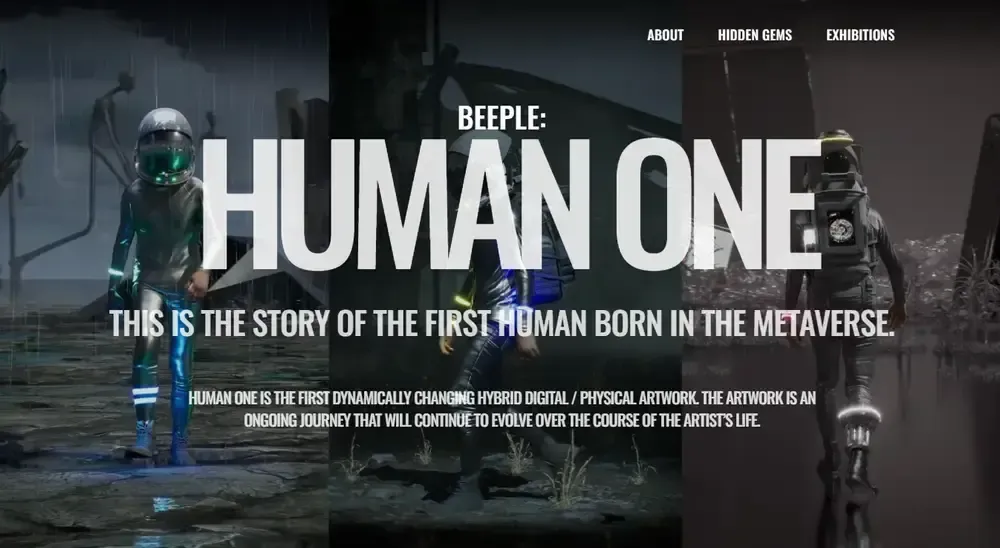
5. CryptoPunk #5822
CryptoPunks are a legendary collection of 10,000 pixel-art characters and have consistently seen huge sales. CryptoPunk #5822 is the most expensive Punk ever sold, fetching 8,000 ETH (approximately $23.7 million) in February 2022.
The NFT was purchased by Deepak Thapliyal, CEO of Chain.com, who publicly announced the acquisition on social media. Punk #5822 commands such a high price due to being one of only nine "Alien" CryptoPunks, the rarest type in the collection.
Originally claimed for free in 2017, CryptoPunks have become status symbols in crypto culture. The seller originally acquired #5822 five years earlier for just $1,641 worth of ETH, illustrating the extreme appreciation of top NFTs during the NFT boom.
CryptoPunk #5822 Highlights:
- Platform: Sold via blockchain transaction directly between buyer and seller, without an auction house.
- Creator: Larva Labs, creators of the iconic CryptoPunks collection launched in 2017.
- Sale Format: Privately purchased by Deepak Thapliyal for 8,000 ETH in February 2022.
- Other Key Info: Seven out of the next 10 most expensive NFTs of all time are part of the CryptoPunk collection, including #7523 ($11.75m), #4156 ($10.26m), #5577 ($7.7m), and #3100 (7.67m).
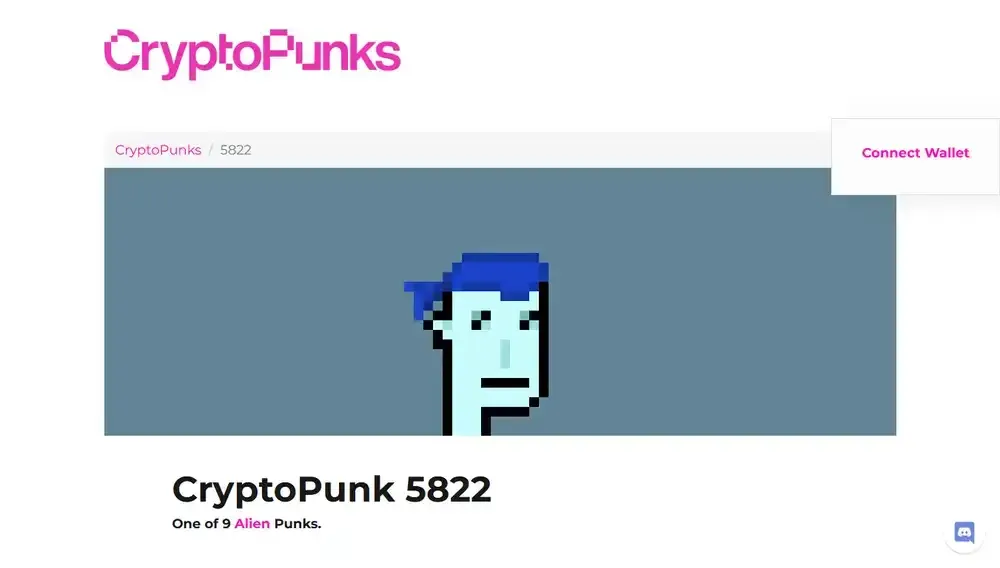
What Are NFTs?
Non-Fungible Tokens (NFTs) are unique digital assets verified on a blockchain, each representing something that is entirely one-of-a-kind. Unlike cryptocurrencies such as Bitcoin or Ether, which are fungible and interchangeable one-to-one, each NFT has a distinct identifier and metadata.
An NFT is essentially a piece of code, like Ethereum’s ERC-721 token standard, recorded on a blockchain that links to a digital asset. Owning an NFT means having a verifiable, original version of a digital item, with the blockchain serving as a public ledger of ownership.
NFTs surged in popularity in 2021 as artwork collections and trading-card-like digital collectibles went mainstream. Global NFT sales rose sharply from around $200 million in the first quarter of 2021 to $25 billion by year's end.
Almost every NFT can be bought, sold, and traded on specialized online marketplaces such as OpenSea, Blur, LooksRare, and Magic Eden. These platforms allow users to explore NFT collections, place bids, and securely transfer ownership using cryptocurrency wallets.
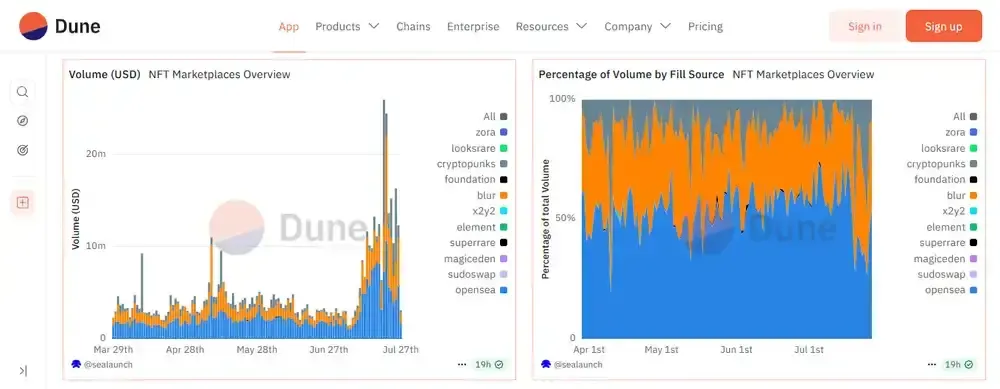
Why Do Some NFTs Have Such High Value?
Certain NFTs reach astronomical prices, while many sell for just a few dollars. In general, an NFT’s price boils down to supply and demand in a market that values rarity, authenticity, utility, and hype.
Here are the top factors that high-value NFTs have in common:
- Scarcity and Uniqueness: NFTs with provable rarity, like one-of-one artworks or rare attributes, can command extremely high prices.
- Creator Reputation and Provenance: NFTs by famous artists like Pak or those with notable ownership histories carry prestige, drastically increasing their value.
- Utility and Community: NFTs that offer utility or act as membership cards within strong communities (e.g., Bored Ape Yacht Club) gain additional value through these features.
- Speculation and Investment: Many buyers speculate that certain NFTs will appreciate in value, similar to fine art or collectibles, driving prices higher.
- Cultural and Social Value: High-value NFTs serve as status symbols or digital identity markers, providing social prestige and recognition in crypto communities.
Top NFT Collections by Overall Sales
Beyond individual NFT sales, entire NFT collections have achieved massive transaction volumes and lasting influence. Here are the top NFT projects by overall sales volume, along with details about what made them so popular and expensive.
Axie Infinity
Axie Infinity is a play-to-earn blockchain game featuring "Axies," cute monster NFTs that players buy, breed, and battle. At its height in 2021, the game had millions of active players, with NFTs trading heavily on its marketplace, with over $4.2 billion in sales, more than 2 million unique buyers, and 22 million transactions.
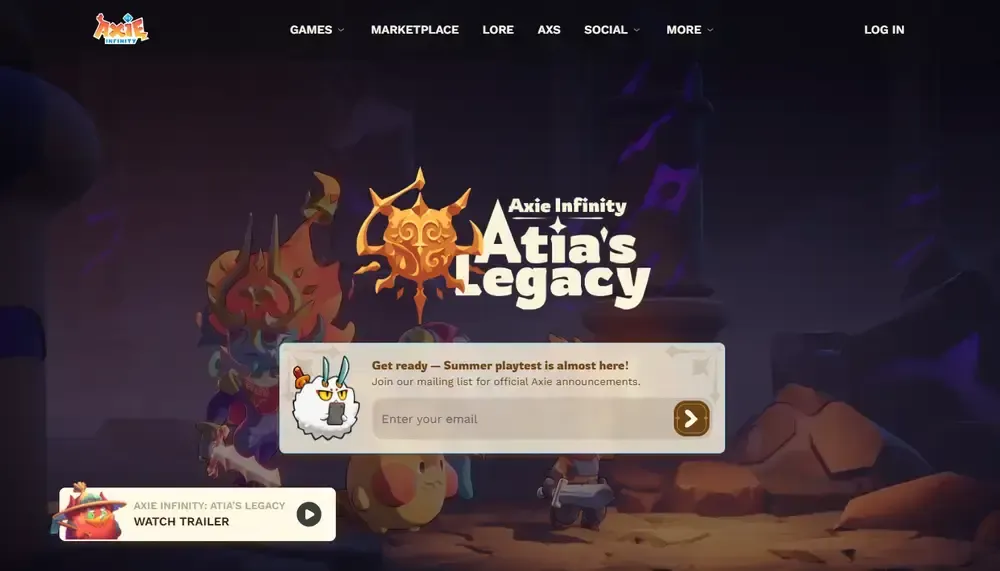
Bored Ape Yacht Club (BAYC)
Bored Ape Yacht Club is a famous collection of 10,000 cartoon ape profile-picture NFTs launched in April 2021. Prices soared as celebrities such as Steph Curry and Eminem purchased Apes, driving total sales volume to roughly $3.24 billion and a peak single-sale record of approximately $3.4 million.
.webp)
CryptoPunks
CryptoPunks, created by Larva Labs in 2017, are considered historic artifacts as the first major NFT collectibles on Ethereum. The collection consists of 10,000 pixelated avatars and has seen hundreds of high-value sales, reaching a total of about $2.99 billion in lifetime transactions.

Otherside (Virtual Land)
Otherside is a metaverse real estate NFT project launched by Yuga Labs in April 2022, selling virtual land plots called "Otherdeeds." The collection reached around $561 million in primary sales in one night, followed by hundreds of millions in secondary trades.
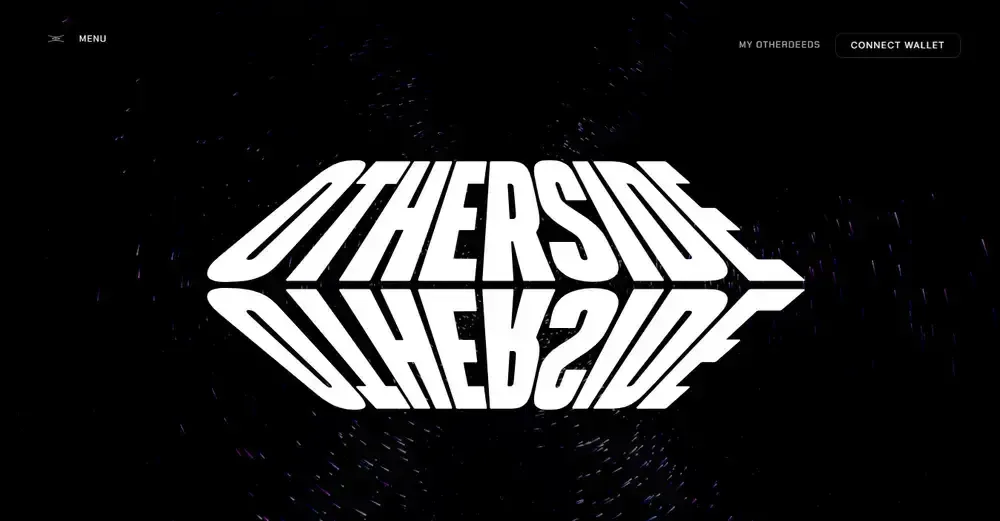
Rising Contenders
Collections like Mutant Ape Yacht Club, Azuki, Pudgy Penguins, DeGods, and Mad Lads gained substantial traction from 2023 to 2025, each achieving high trading volumes. These collections demonstrated the strength of community-driven NFT projects, expanding the NFT market beyond Ethereum.
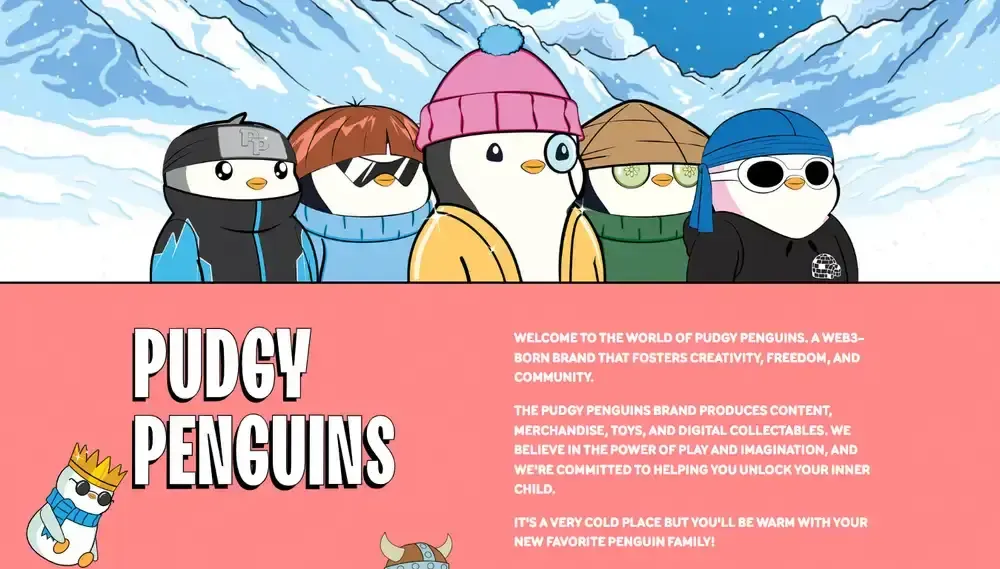
NFTs Across Different Blockchains
While Ethereum dominates high-end NFT sales, NFTs are a multi-chain phenomenon, each blockchain offering unique advantages. Below are key features and highlights of NFTs on various blockchains as of 2025 that we compiled by using data from CryptoSlam:
- Ethereum: With over $46.2 billion in sales, Ethereum remains the leading NFT chain, home to iconic collections like CryptoPunks and Bored Ape Yacht Club, backed by strong liquidity and collector trust.
- Solana: Recording $6.4 billion in sales, Solana leads in transaction volume with fast, low-cost trading and a vibrant PFP scene including DeGods and Mad Lads.
- Bitcoin (Ordinals): Now surpassing $5.5 billion in NFT sales, Bitcoin has grown as a major NFT chain through Ordinal inscriptions, focusing on collectibles like Bitcoin Punks and rare sat artifacts.
- Ronin: With $4.3 billion in sales and virtually zero wash trading, Ronin's success is powered by Axie Infinity, making it a pioneer of play-to-earn NFT gaming.
- Polygon: Generating $2.1 billion in sales, Polygon has attracted mass adoption through brand partnerships (e.g., Reddit, Starbucks), offering low fees and easy onboarding for new users.
- Flow: Designed for mainstream users, Flow has logged $1.5 billion in sales, primarily through sports NFT platforms like NBA Top Shot, NFL All Day, and UFC Strike.
- Immutable X: Focused on Web3 gaming, Immutable X has reached over $1 billion in NFT sales, powering trading card games like Gods Unchained with minimal fees and carbon neutrality.
- Mythos Chain: With $866 million in total NFT sales, Mythos has quickly gained traction through gaming platforms like DMarket and early Web3 game integrations.
- Cardano: Although not a top player by volume, Cardano NFTs have surpassed $662 million in sales, with growing interest in art and utility-driven projects on the chain.
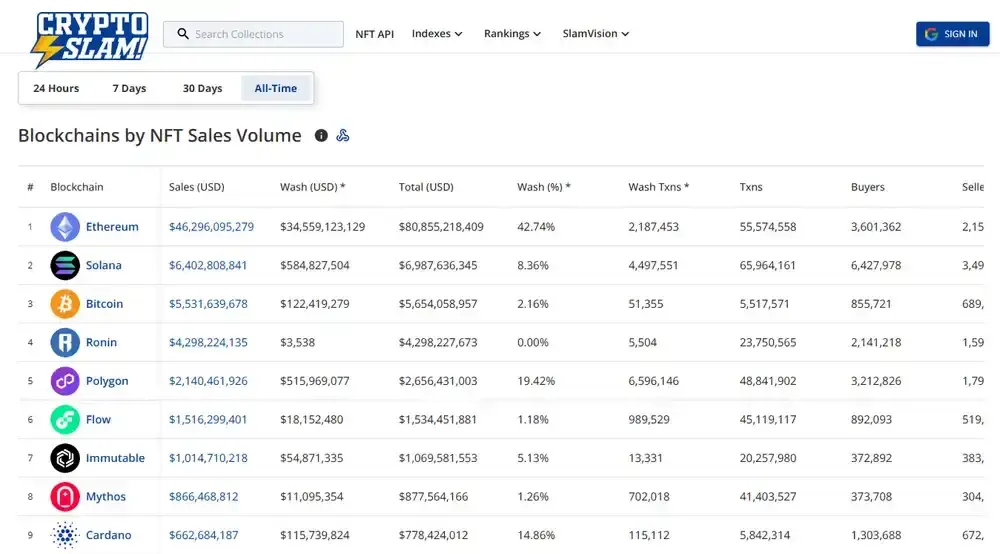
Final Thoughts
NFTs have come a long way from niche blockchain experiments to a diverse asset class spanning art, gaming, media, and beyond. By July 2025, the initial frenzy has calmed compared to the 2021 peak, but the NFT market remains relevant as last year still saw $8.8B in NFT sales.
For newcomers, the staggering prices of top NFTs may seem baffling, but as we’ve broken down, those values arise from genuine market dynamics like scarcity, community demand, cultural relevance, and utility.
Looking ahead, will we see another Beeple-style $69 million sale? It’s certainly possible. Institutional players are entering the space, from traditional auction houses to luxury brands minting NFTs.
Frequently asked questions
Can NFTs lose their value over time?
Yes, NFTs can lose value if demand decreases, market trends shift, creator reputation declines, or the overall cryptocurrency market weakens.
Are NFT transactions taxable events?
In many jurisdictions, buying, selling, or trading NFTs is taxable, often treated similarly to property sales subject to capital gains tax.
Can NFTs be stolen or hacked?
While NFTs themselves are secure on the blockchain, digital wallets holding NFTs can be hacked or compromised, potentially leading to theft.
What are gas fees when buying NFTs?
Gas fees are transaction costs paid to blockchain miners or validators when minting, buying, or selling NFTs, varying depending on network congestion.
Can NFTs be used for money laundering?
Yes, NFTs can potentially be misused for money laundering, as high-value NFT purchases might obscure illicit funds, prompting increased regulatory scrutiny.
%25201%2520(1).webp)
Written by
Emily Shin
Research Analyst
Emily is passionate about Web 3 and has dedicated her writing to exploring decentralized finance, NFTs, GameFi, and the broader crypto culture. She excels at breaking down the complexities of these cutting-edge technologies, providing readers with clear and insightful explanations of their transformative power.
%2520(2).svg)
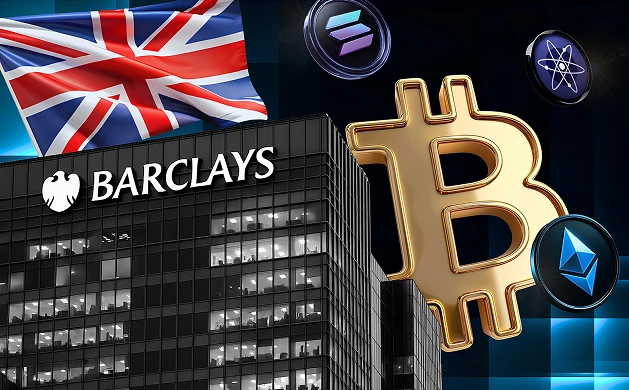
%2520(1).webp)


%2520(1).webp)




